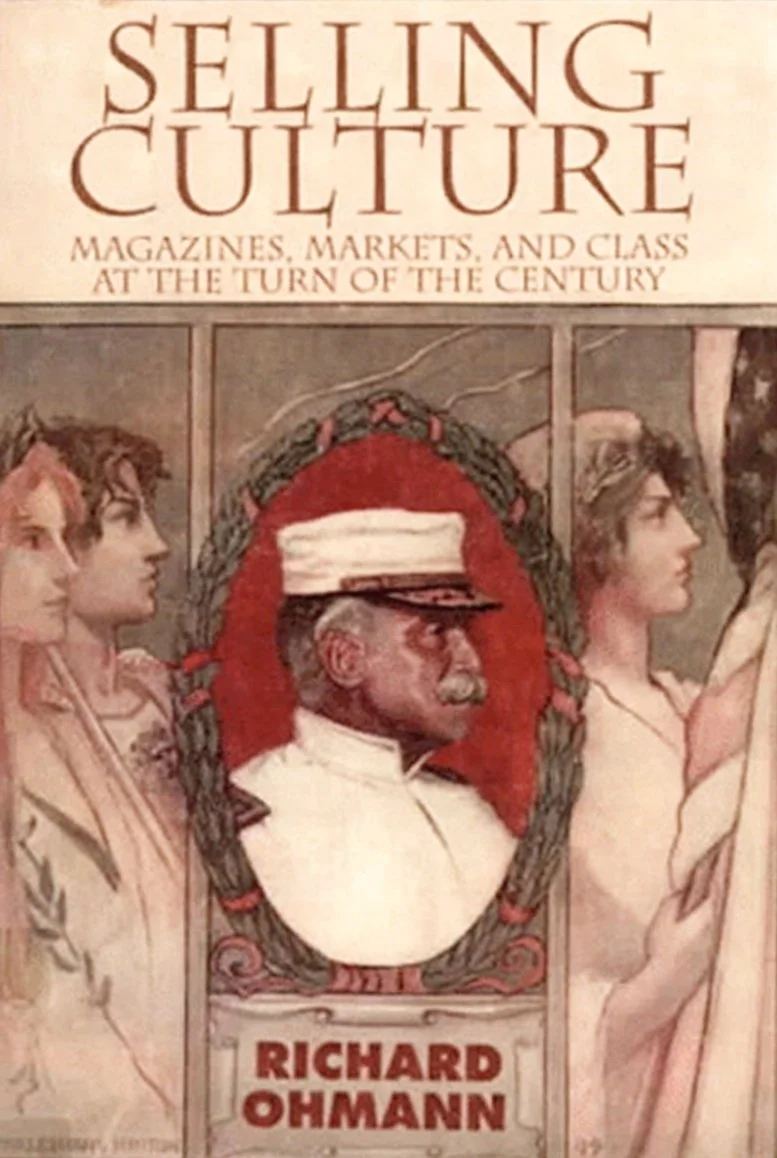Review: Richard Ohmann’s Selling Culture
I'm currently working through the historiographical and theoretical foundations of my dissertation, and the late Richard Ohmann’s Selling Culture has been at the front of my mind. His early synthesis on Marxism and mass media offers a framework that still feels incisive today—particularly his interpretation of Production and Capital, which sharply outlines the political economy of modern mass communications while sidestepping some of the deterministic traps into which many modernists fell.
Ohmann’s reading of Marx reminds us that the economic base fundamentally shapes not only material life, but the very forms of social consciousness available to people. But, crucially, he emphasizes how this “determination” operates through specific agents. As he points out:
“...this determination works through the agency, not just of 'people,' but especially of some people.”
From there, Ohmann draws directly on The German Ideology:
“The class which has the means of material production at its disposal, has control at the same time over the means of mental production... so that thereby, generally speaking, the ideas of those who lack the means of mental production are subject to it.”
His insight is to historicize mass culture as a project not of random evolution, but of class consolidation—a system built to manage both material production and mass consciousness. As media technologies became more efficient—railroads, steam presses, photoengraving, telegraphy, and later motion pictures and radio—the ability to craft a unified, hegemonic culture expanded alongside capitalism’s infrastructure.
This is where Ohmann’s relevance to advertising history deepens. Drawing from Marx and aligning with Frankfurt School concerns, he outlines how “mass culture fuses the bourgeoisie’s mastery of production and its need to master the consciousness of its subordinates.” In my own work on photography and postwar advertising, I find this framing useful for thinking about how commercial imagery doesn’t just reflect dominant ideologies—it participates in their daily reproduction.
But Ohmann also diverges from Frankfurt School pessimism. He acknowledges that while the hegemonic process is real, it’s often indirect, sustained not by coercion but by consent. Here he leans toward a Gramscian understanding of ideology—one in which media institutions shape what feels normal, inevitable, or natural within capitalist societies. The cultural field, including the realm of advertising photography I study, becomes a terrain where power is manufactured through aesthetics, genre conventions, and the authority of taste.
For scholars and students of visual culture and advertising, Selling Culture remains a foundational text. Ohmann invites us to look not just at what ads say, but who makes them, who funds them, and what institutional and ideological conditions make certain kinds of speech possible—while rendering others marginal or invisible.
So what? Why should a document like this matter to researchers interested in visual vernaculars, aesthetic taste, or photographic communities?
Because Selling Culture helps frame how images—especially commercial ones—become social instruments. It pushes us to ask: Whose images define the visual world? Who gets to shape “common sense” through pictures? And how might mass culture both enable and limit forms of visual dissent?
Further Reading & Research Resources
Ohmann’s work has been a source of great inspiration for my own research. I feel a special kinship with him, having now taught consumption and mass culture focused courses at Wesleyan University, where Ohmann wrote, taught, and mentored for 35 years.
Here are some general resources for getting started in his area of conversation.
Richard Ohmann – Selling Culture: Magazines, Markets, and Class at the Turn of the Century
Verso Books summary
Available on Internet ArchiveAntonio Gramsci – Selections from the Prison Notebooks
Especially the sections on cultural hegemony and “common sense”
Full text online (Marxists.org)The Frankfurt School and the Culture Industry
Max Horkheimer & Theodor W. Adorno, Dialectic of Enlightenment
For overview: Stanford Encyclopedia of Philosophy – Critical Theory
Media History & Cultural Production
Raymond Williams, Marxism and Literature
Stuart Hall, “Encoding/Decoding”
John Guillory, Cultural Capital: The Problem of Literary Canon Formation
Advertising and Image Culture
Roland Marchand, Advertising the American Dream
Ellen Lupton & J. Abbott Miller, Design Writing Research
Pamela M. Lee, Chronophobia: On Time in the Art of the 1960s
